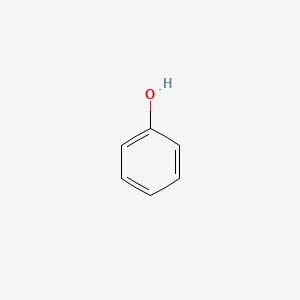Other Names: Carbolic Acid; Hydroxybenzene; Phenic Acid
Chemical Formula: C6H6O; C6H5OH
CAS Number: 108 – 95 – 2
Industry Uses: Antiseptic; Disinfectant; Pharmaceutical and Chemical Production
Health Risks: Irritant; Dermal Burns; Organ Damage; Death
What is Phenol?
Phenol, known by various names such as carbolic acid and hydroxybenzene, is a versatile compound with a wide range of applications across industries. It serves as a key ingredient in disinfectants, antiseptics, and pharmaceuticals, contributing to its widespread use in medical and chemical production processes. Phenol is also utilized in the synthesis of plastics and serves as a precursor to numerous industrial products, including polycarbonates, epoxies, and detergents.
While phenol plays a crucial role in various industrial processes, its presence in the environment can pose significant risks to human health and aquatic ecosystems. Exposure to phenol, whether through ingestion, absorption, or inhalation, can result in severe irritation to the skin and other bodily tissues, leading to dermal burns and organ damage, particularly to the liver and kidneys. Prolonged or extreme exposure to phenol may even prove lethal, emphasizing the importance of stringent safety measures in handling this compound.
Regulations and Health Standards
Government agencies such as the Environmental Protection Agency (EPA), the Occupational Safety and Health Administration (OSHA), and the National Institute for Occupational Safety and Health (NIOSH) have established safety standards and exposure limits for phenol to safeguard public health and occupational safety. These standards specify permissible exposure limits and recommended action levels to minimize the risks associated with phenol exposure in various settings, including industrial workplaces and environmental contexts.
Measuring Phenol Concentration
Monitoring phenol concentration in water is crucial for assessing environmental contamination levels and ensuring compliance with regulatory standards. Instruments such as those offered by CHEMetrics provide instrumental kits for determining phenol levels in water, enabling accurate measurement and analysis. These kits offer a range of detection capabilities, from low concentrations to high levels, allowing for comprehensive assessment and monitoring of phenol contamination in water sources.
All of those units can be found here: https://www.gas-sensing.com/information/phenols
Conclusion: Prioritizing Safety and Compliance
As a compound with significant industrial applications and potential health risks, phenol requires careful handling and monitoring to mitigate adverse effects on human health and the environment. By adhering to established safety regulations, implementing appropriate safety measures, and utilizing reliable testing methods, industries can effectively manage phenol exposure and contribute to a safer, healthier workplace and ecosystem.

